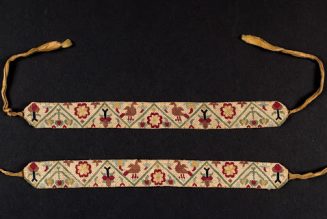When you take the light of the Planets as mediated by the Signs and project them onto a precise time and in particular place, they fall into the Houses.
The way we normally measure time is through hours, minutes, and seconds.
The way we plot locations is through degrees, minutes, and seconds of longitude and latitude.
If you look at an old-fashioned clock with hands and the numbers 1 through 12 and then you look at an astrological chart, it is fairly clear that they have an ancestor or two in common.
The term horoscope comes from the Greek horoskopos which means “look of the hour” or “marker of the hour.”
The term “horoscope” is often used loosely today to refer to a chart or to a forecast, but it originally meant the marker for the beginning of a House system.
The reason astrologers need to know as exactly as possible the time for constructing a chart is that the placement of the Planets and Signs into the Houses can only occur if you know their starting point.
Imagine again the face of a clock, except this is a special clock: Instead of hands that mark the hours, minutes, and seconds, there is a hand for each of the Planets.
By the way, this special clock also marks their location in degrees.
Most astrological charts are drawn with a vertical line in the horizontal line that is darker or in some other manner highlight four directions.
The point of the top of the chart represents the South, and the bottom represents the North.
The left side of the chart represents the East, and the right side, the West.
This may give you a moment’s pause if you are accustomed to the standard used in most maps and also in diagrams for circles used in Magick.
Once you understand the rationale for flipping the directions, it will be easy to both remember and to understand the default orientation and astrological charts.
At any given time or place it may be night or day, but the chart has to show the entirety of the celestial sphere, both above and below.
If you were born at night or if the chart is being constructed is for an event at night, then the Sun will be below the horizontal line in the chart.
If you were born during the day or if the chart is being constructed for an event during the day, then the Sun will be above the horizon line.
When someone speaks about the Rising Sign (the Ascendant), they are referring to whichever Sign is on the far left point of a horizontal line that represents the Eastern horizon.
The Rising Sign literally is the Sign that is rising and is the anchor of the Houses.
When we look at charts later in the book you will notice that despite the fact that the Signs are all exactly 30° size, the Houses can vary in size.
Depending upon the time of the year and how far north or south you are, the length of the day and the length of the night can have considerable variation.
Remember, the chart is a condensation of several planes of action and is also a projection onto a flat surface.
The 12 Houses still have to add up to the 360° of a circle; the top half of the chart represents day and the bottom half represents night.
The calculations in constructing the chart adjust the sizes of the Houses to reflect the season and the location.
There are many competing House systems for accomplishing this end that you may wish to research if you pursue studies in Astrology.
For the purposes of this book, the charts used in illustrations will be using the Koch House system.
The 12 Houses are actually what happens when the 12 Signs come all the way down to Earth.
Each of the 12 Signs can be said to have a particular temperament, a style of working in the world, and enthusiasm and aptitude for particular activities.
In Astrology we say that each House is ruled by one of the Signs.
In your mind’s eye, see these 12 celestial beings that are the Signs taking aptitude tests before diving down into the workplace that we call Earth.
The result of those aptitude tests would give a variety of jobs or tasks to which that Sign is especially well suited.
Those jobs, tasks, and endeavors revealed in the aptitude tests are the themes of the 12 Houses.
The 12 Houses represent different areas of life, tangible ways in which energy is expressed or received, the parts of the human body ruled by its corresponding Sign, and a myriad of other concrete expressions of the essence of the Signs








